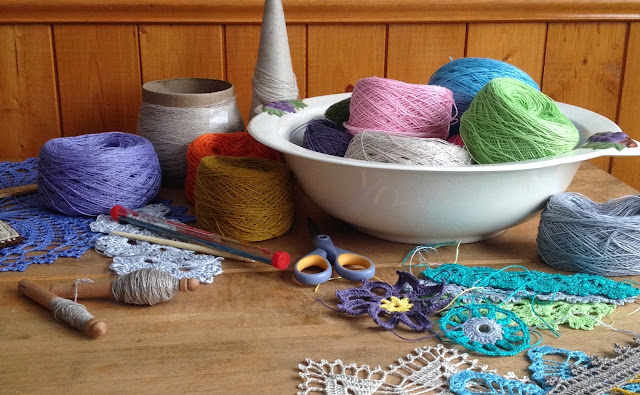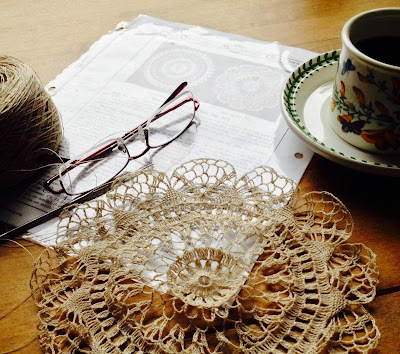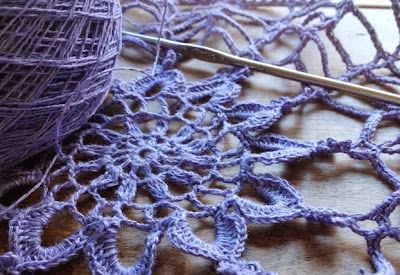Crochet Doily Fibers: Lets Talk About Linen
I love Linen! When you think of linen you think of summer shawls and clothing, but here I'm going to talk about its use in the making of doilies.
A Little about Linen Flax Thread
Linen is a natural fiber made from the flax plant. Linen thread (often called yarn) typically has a thick and thin character with a crisp and textured feel to it. Linen thread produces a soft, lightweight piece that has natural luster, is lint free and does not stretch. Linen is a strong fiber that absorbs moisture very quickly and drys quickly. Linen takes to dyeing like a fish to water producing colors that are deep, bright and vibrant.Working with Linen
Most linens are not mercerized and tend to split if you work with the wrong sized hook. For the most part I find myself working a 3 ply (#10) thread with a 7, 8 or 9 hook. Non-mercerized linen has a texture more like that of yarn, where the thread is flat, not round like mercerized cotton. Linen also has a thick/thin texture which is entirely workable and not an issue. The color selection of linen is one you will never find in cottons. Colors are rich and deep with a natural sheen.Choosing the Right Thread Determines the Overall Look of Your Project
Before I begin any project I spend a great deal of time selecting textiles and considering the design. Some designs call for a thick, heavy thread to give it weight, where others use a fine thread to create a light, frilly piece. Linen does not stretch, so if the design calls for some give on the fibers part, linen will only go so far. Linen also creates a piece that is light as air with a nice drape. And I said "nice drape" not "heavy drape". Bamboo has a heavy drape. Also most linen is not mercerized which gives your design a unique soft, natural look that is elegant at the same time. I don't believe linen to be suited for every design, but it sure has its place.Lets talk about linen thread size for minute
 |
| Cotton (left) linen (right) |
 |
| Linen 3 ply |
 |
| Doily made in 2 ply linen |
Cleaning and Blocking
 Linen Suppliers
Linen Suppliers
The best linen yarns and threads come from Eastern Europe. In the USA (my home) linen thread/yarn is hard to find and when you do find it, it is overpriced. I have found the best value and selection by purchasing internationally. Do consider shipping time when planning your project. My overseas orders generally take 2 weeks to receive so I always order in bulk. The first four shops listed below also create with linen. Check out
their pages to see all the different items you can create with linen.Online Sources for linen thread:
Yarn Stories in Lithuania
or on Facebook: https://www.facebook.com/pages/Yarn-Stories/186737808116471?sk=timeline
Man Crochets in Lithuania
Linen Spirit in Lithuania
Namolio, England, United Kingdom
Webs - for Brassard 8/2 Cottolin
Sewandso (UK) - for Anchor Artiste Linen
 |
| The End |





Comments